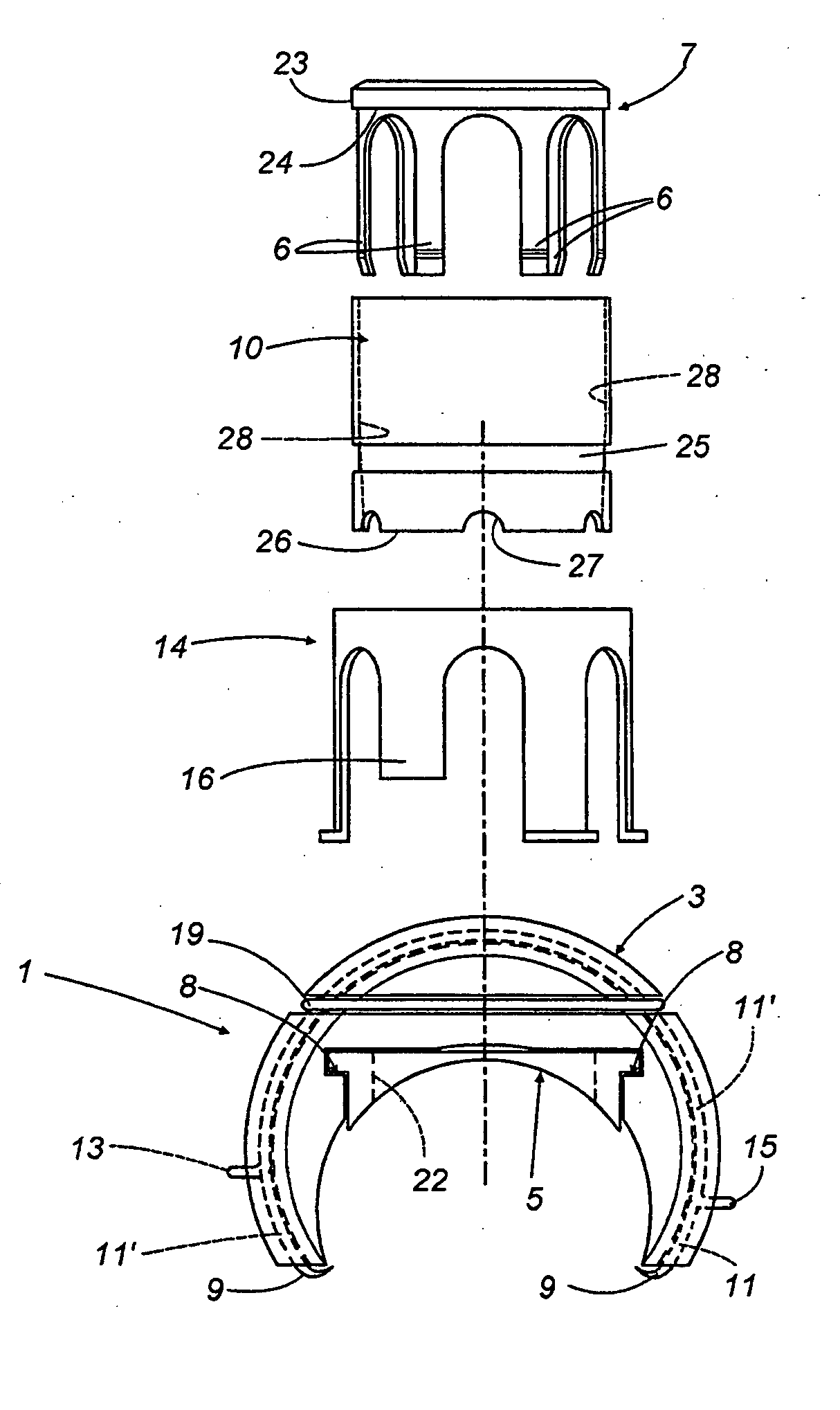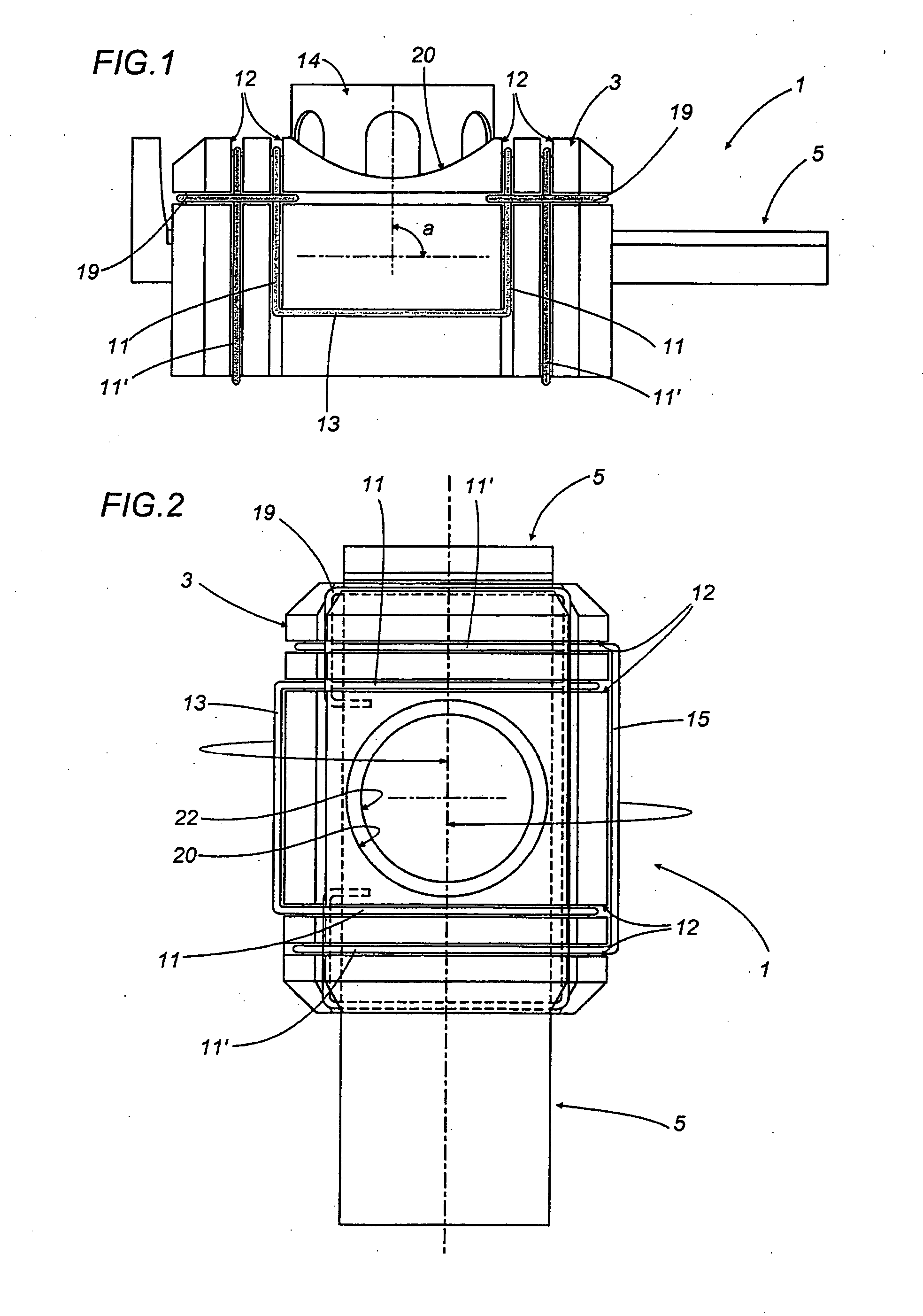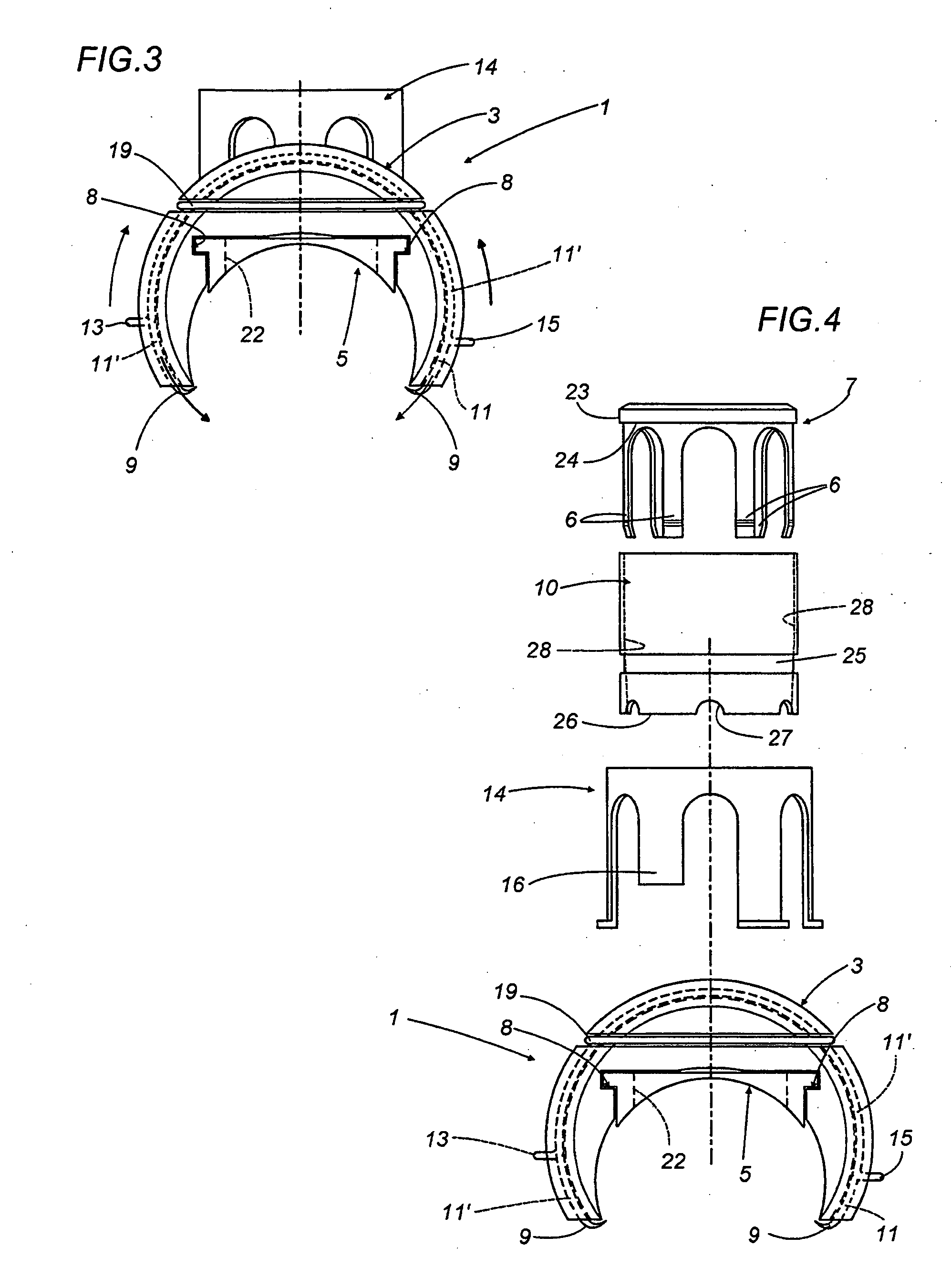Device for end-to-side anastomosis
a technology of end-to-side anastomosis and end-to-side anastomosis, which is applied in the field of end-to-side anastomosis, can solve the problems of preventing the flow of original blood to be perfectly restored to the vessel, reducing the effectiveness of re-establishing flow to the vessel, and dangerous to the health of patients, so as to reduce the time required for the anastomosis operation. , the effect of learning in
- Summary
- Abstract
- Description
- Claims
- Application Information
AI Technical Summary
Benefits of technology
Problems solved by technology
Method used
Image
Examples
Embodiment Construction
[0040] With reference the accompanying drawings, a device according to the invention comprises a body 1, clearly shown in FIGS. 1 to 3, for connecting a side wall portion 4 of an anastomosed vessel.
[0041] In the preferred embodiment described here, the body 1 comprises an approximately semicylindrical or “saddle-shaped” element 3 designed to be placed at least partly over the portion 4 and having a central hole 20 in which there is positioned and fixed a cylindrical element 14 whose axis “a” makes an angle, preferably, of 90°, 45° or 30° with the longitudinal axis of the saddle-shaped portion 3 or of the portion 4 of the anastomosed vessel.
[0042] The body 1 also comprises a gate valve 5 slidable lengthwise along internal grooves 8 made in the saddle 3 and having a hole 22 in it, this hole 22 being such that, during use, it is alternately aligned with and offset from the hole 20 in the saddle 3, in such a manner as to open and close the hole 20, respectively.
[0043] The inside of t...
PUM
 Login to View More
Login to View More Abstract
Description
Claims
Application Information
 Login to View More
Login to View More - R&D
- Intellectual Property
- Life Sciences
- Materials
- Tech Scout
- Unparalleled Data Quality
- Higher Quality Content
- 60% Fewer Hallucinations
Browse by: Latest US Patents, China's latest patents, Technical Efficacy Thesaurus, Application Domain, Technology Topic, Popular Technical Reports.
© 2025 PatSnap. All rights reserved.Legal|Privacy policy|Modern Slavery Act Transparency Statement|Sitemap|About US| Contact US: help@patsnap.com



